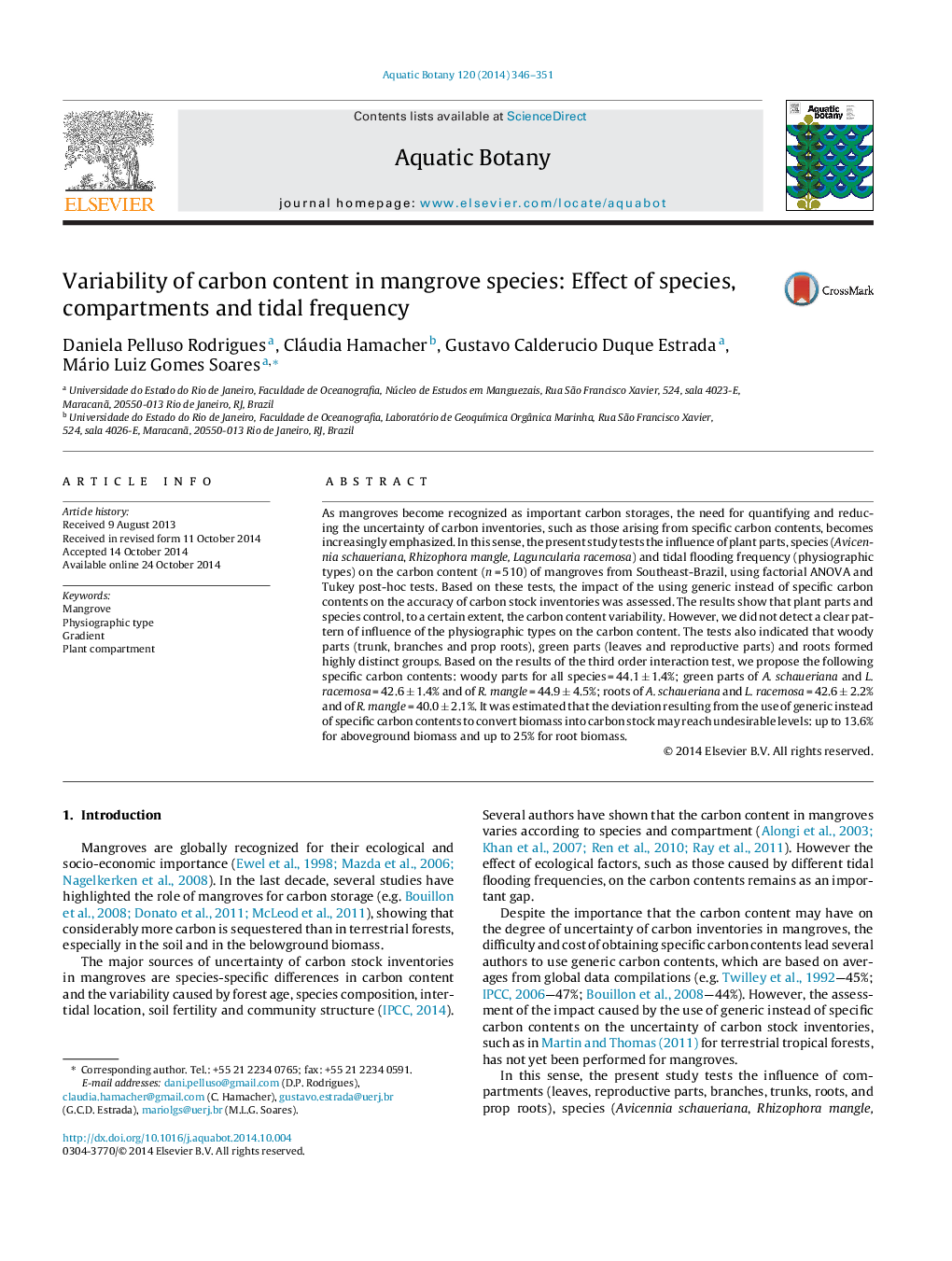| Article ID | Journal | Published Year | Pages | File Type |
|---|---|---|---|---|
| 4527722 | Aquatic Botany | 2015 | 6 Pages |
•Carbon content is controlled by species and plant part, not by physiographic types.•Woody parts, green parts and roots differed distinctly in carbon content [C].•[C] in woody parts of Avicennia schaueriana, Laguncularia and R. mangle are similar.•[C] in the roots and green parts of R. mangle is different from the other species.•C stock would be overestimated by up to 25% if generic [C] were used on these species.
As mangroves become recognized as important carbon storages, the need for quantifying and reducing the uncertainty of carbon inventories, such as those arising from specific carbon contents, becomes increasingly emphasized. In this sense, the present study tests the influence of plant parts, species (Avicennia schaueriana, Rhizophora mangle, Laguncularia racemosa) and tidal flooding frequency (physiographic types) on the carbon content (n = 510) of mangroves from Southeast-Brazil, using factorial ANOVA and Tukey post-hoc tests. Based on these tests, the impact of the using generic instead of specific carbon contents on the accuracy of carbon stock inventories was assessed. The results show that plant parts and species control, to a certain extent, the carbon content variability. However, we did not detect a clear pattern of influence of the physiographic types on the carbon content. The tests also indicated that woody parts (trunk, branches and prop roots), green parts (leaves and reproductive parts) and roots formed highly distinct groups. Based on the results of the third order interaction test, we propose the following specific carbon contents: woody parts for all species = 44.1 ± 1.4%; green parts of A. schaueriana and L. racemosa = 42.6 ± 1.4% and of R. mangle = 44.9 ± 4.5%; roots of A. schaueriana and L. racemosa = 42.6 ± 2.2% and of R. mangle = 40.0 ± 2.1%. It was estimated that the deviation resulting from the use of generic instead of specific carbon contents to convert biomass into carbon stock may reach undesirable levels: up to 13.6% for aboveground biomass and up to 25% for root biomass.
